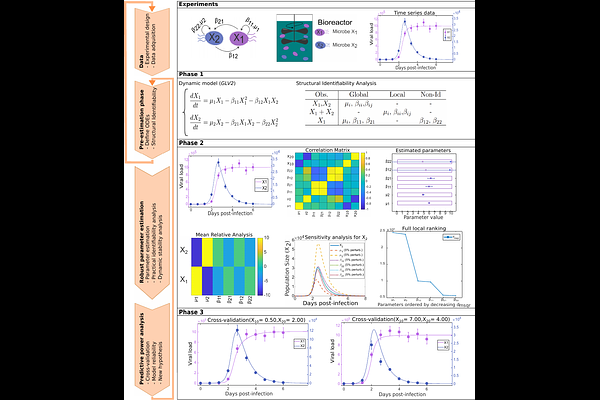Identification of dynamic models of microbial communities

Identification of dynamic models of microbial communities
Paredes-Vazquez, A.; Balsa-Canto, E.; Banga, J. R.
AbstractMicrobial communities, complex ecological networks crucial for human and planetary health, remain poorly understood in terms of the quantitative principles governing their composition, assembly, and function. Dynamic modeling using ordinary differential equations (ODEs) is a powerful framework for understanding and predicting microbiome behaviors. However, developing reliable ODE models is severely hampered by their nonlinear nature and the presence of significant challenges, particularly critical issues related to identifiability. Here, we address the identification problem in dynamic microbial community models by proposing an integrated methodology to tackle key challenges. Focusing on nonlinear ODE-based models, we examine four critical pitfalls: identifiability issues (structural and practical), unstable dynamics (potentially leading to numerical blow-up), underfitting (convergence to suboptimal solutions), and overfitting (fitting noise rather than signal). These pitfalls yield unreliable parameter estimates, unrealistic model behavior, and poor generalization. Our study presents a comprehensive workflow incorporating structural and practical identifiability analysis, robust global optimization for calibration, stability checks, and rigorous predictive power assessment. The methodologys effectiveness and versatility in mitigating these pitfalls are demonstrated through case studies of increasing complexity, paving the way for more reliable and mechanistically insightful models of microbial communities. Availability The code that implements the methodology and reproduces the results is available at https://doi.org/10.5281/zenodo.15309438